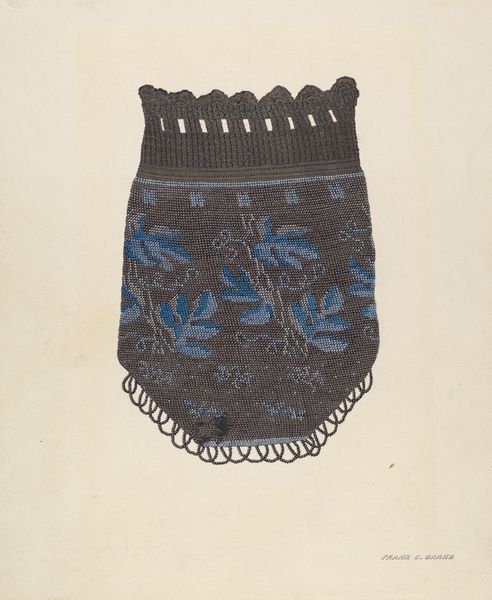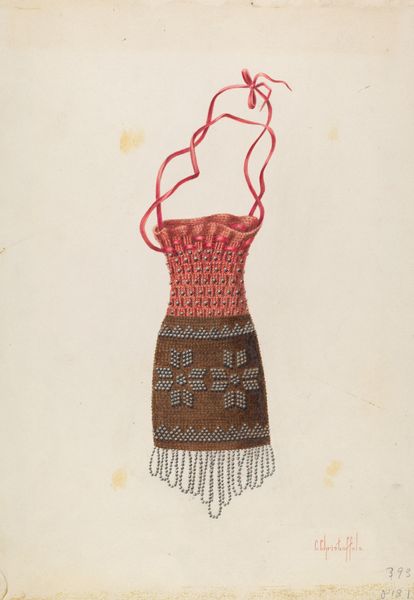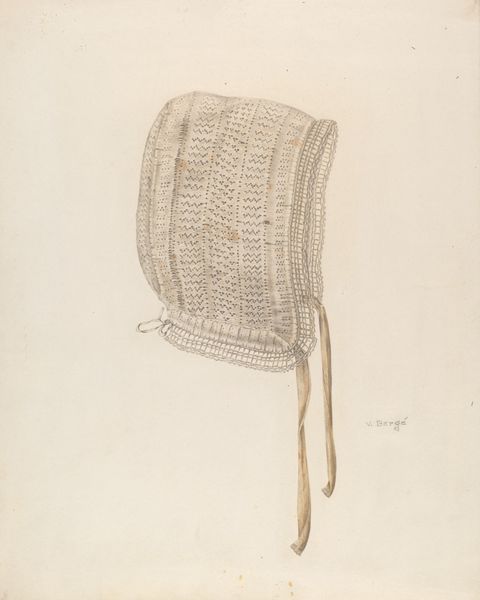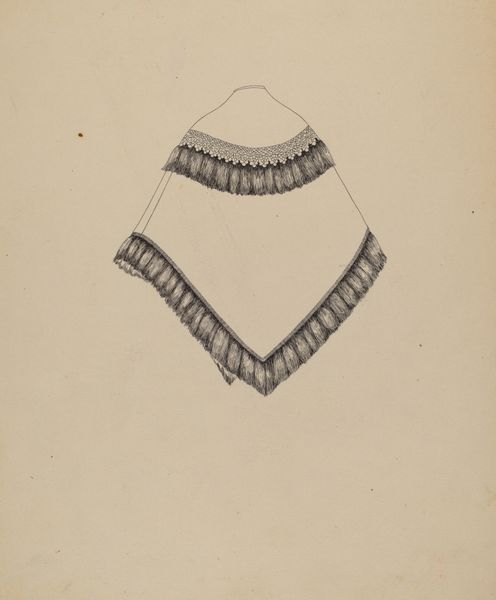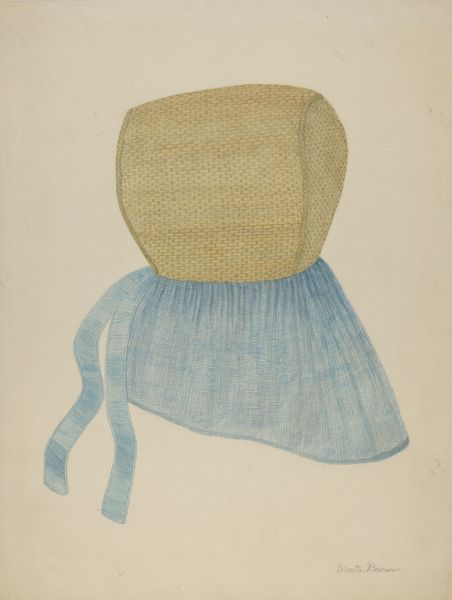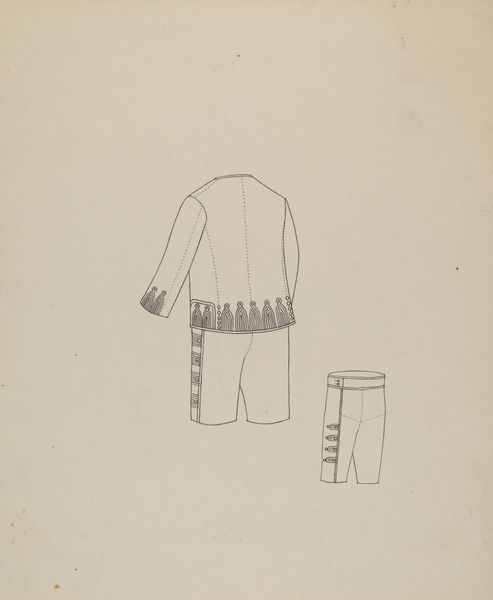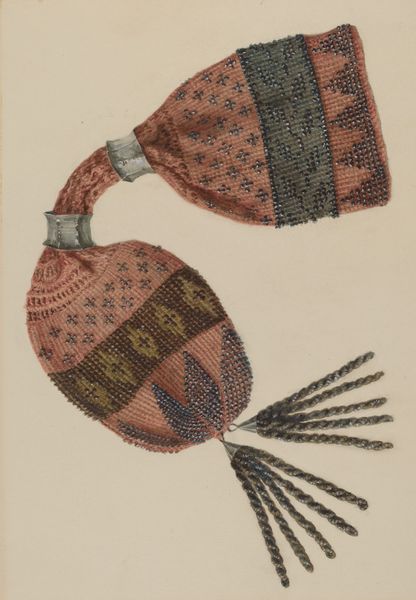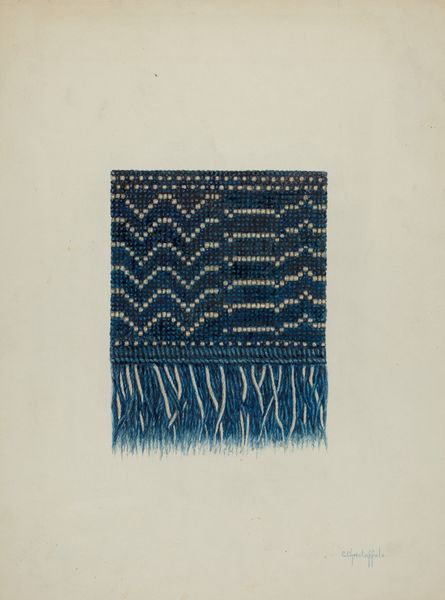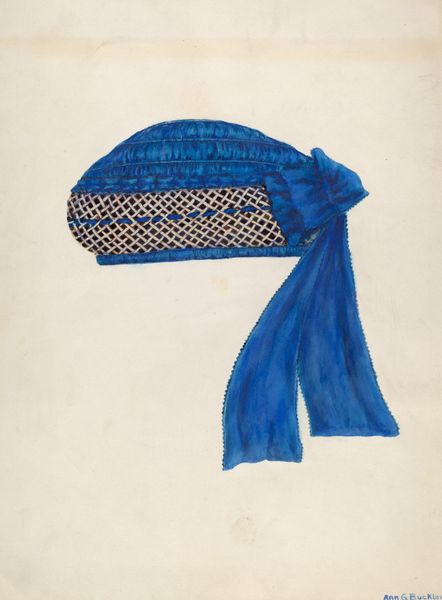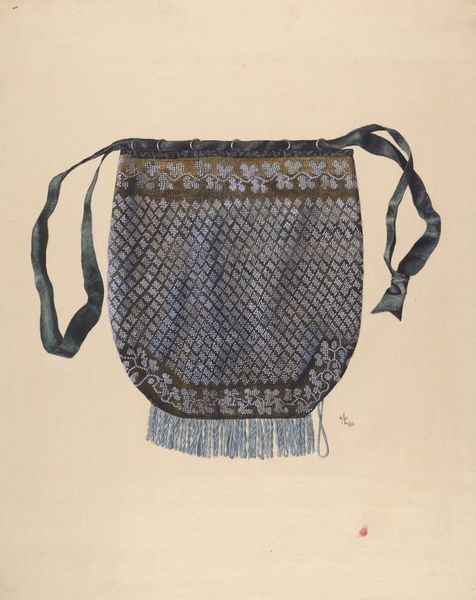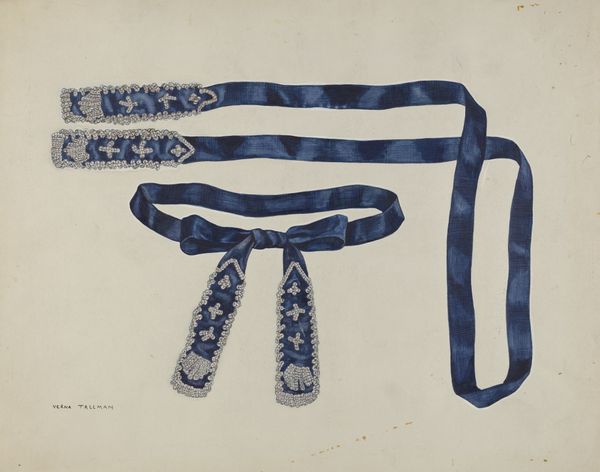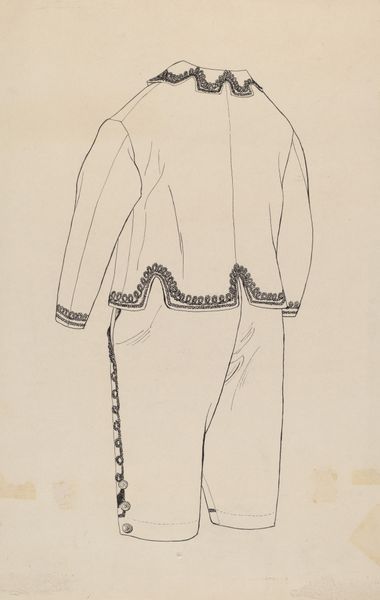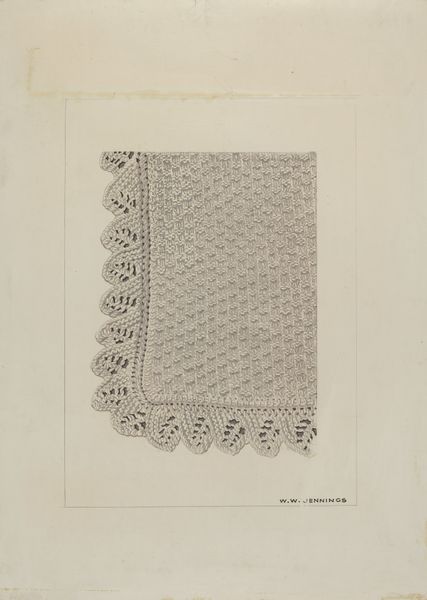
drawing, textile, watercolor
#
drawing
#
textile
#
watercolor
#
watercolour illustration
#
watercolor
Dimensions: overall: 35.6 x 25.1 cm (14 x 9 7/8 in.)
Copyright: National Gallery of Art: CC0 1.0
Curator: This is a watercolour drawing entitled "Hose," created around 1937 by Ann Gene Buckley. It showcases two sections of intricately patterned stocking or leg covering. Editor: The piece has such a gentle feel—soft washes of colour, the delicate line work… It's quite charming. It feels like an artifact plucked from the past. Curator: I agree, it offers us a tangible connection to the past, inviting an exploration into its material and process. The medium itself, watercolour on paper, speaks to accessibility and the ready availability of such materials, particularly around the time of its making. What were the conditions of accessing watercolor paints and textiles? How was textile work valued, or not, when Buckley rendered her object? Editor: Well, if we consider the period, the late 1930s, we're looking at the tail end of the Great Depression and the buildup to the Second World War. So the social and political contexts of that era inevitably shape how we perceive this artwork and perhaps the production of hose like this one. Was Buckley influenced by socio-economic conditions of her time? Did she have an intended consumer in mind? Curator: Precisely. The use of textile patterns introduces interesting labor concerns to its status as artwork. Buckley depicts manufactured object with aesthetic care. Why elevate hose in such a fashion? Are the red flowers suggesting beauty in the mundane? Editor: Absolutely, and one could argue that depicting a functional item like hose serves to democratize art. It removes it from the pedestal and brings it into everyday life. This piece provides an entry point to discussing gendered labor within domestic craft traditions, particularly in that period of social history. Curator: Moreover, the skill required to render these detailed designs speaks volumes about the maker’s capabilities and how design could be accessible via watercolor sketches or via the manufacture of the hose. How labor manifests both materially and symbolically should prompt questions. Editor: And of course, a piece like this encourages us to contemplate broader themes of how historical contexts shape aesthetic preferences, or how art serves different societal functions throughout time. Ultimately, Buckley's artwork can give us an enriching portal into material practices and culture. Curator: A very useful way to examine hose, indeed.
Comments
No comments
Be the first to comment and join the conversation on the ultimate creative platform.
